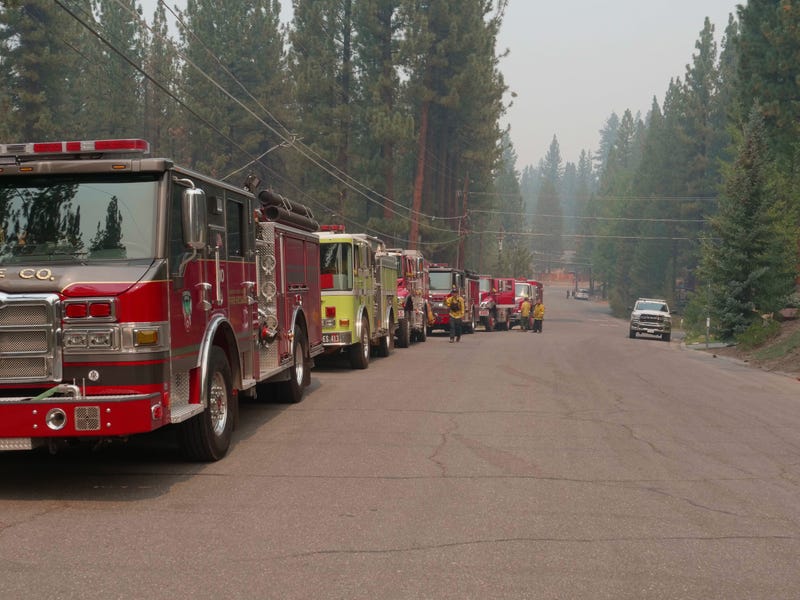
In one of the more active areas of the Caldor Fire, crews have, so far, been successful at protecting the Kirkwood Ski Resort and the houses around it from the blaze.
Helicopters dipped into Caples Lake and dumped water into dense trees in order to steer the Caldor Fire away from the resort. Along the Kirkwood roads, handcrews on Friday used chainsaws to clear vegetation while working to keep the fire away from populated areas.

CAL FIRE Battalion Chief Marcus Hernandez said homeowners should be doing what they can to reduce fuel, too.
"If we get people who live here to mitigate the vegetative hazards before we get here, (that's) good," Hernandez told KCBS Radio, adding firefighters need "good planning as we develop into the more wilderness areas because there is an inherent danger with those areas."
That's something to consider, as remote work increasingly allows people to move into places like Tahoe, while the cost of living in major Bay Area cities drives others into high-risk fire areas.
As wildfires become more common and more dangerous due to climate change, Hernandez told KCBS Radio that stricter regulations on new developments are in place to ensure new buildings are safer.
There are limits, for instance, on how long a dead-end road can be. Those roads are limited to a mile in length, and there have been proposals to cut that limit further to a half-mile in high-risk areas.
"We don't want firefighters and civilians stuck beyond one mile down a road, having to travel a long distance to escape that fire," he said.
Hernandez added that safety regulations needed to be kept in mind when it comes to building roads.
"Back in the day, these roads were, let’s say, 8 feet, 10 feet wide," he explained. "Well, that doesn't support fire engines getting into protect the houses, protect the people and the people getting out (of their homes)."
Now, new roads in the area have to be at least 20 feet wide.

